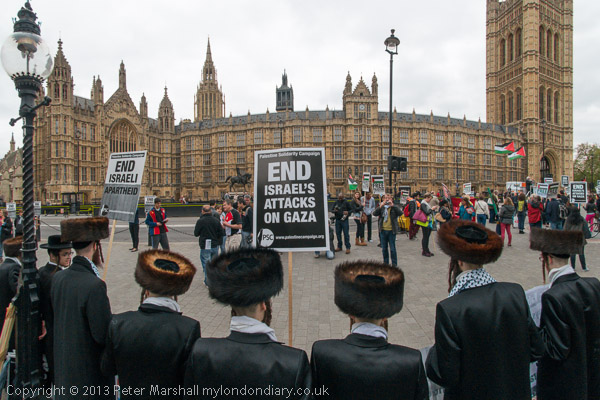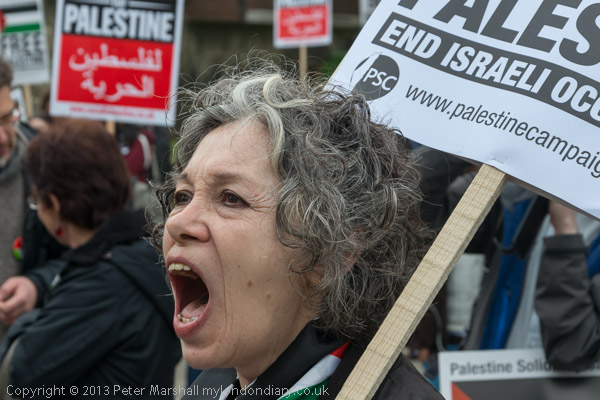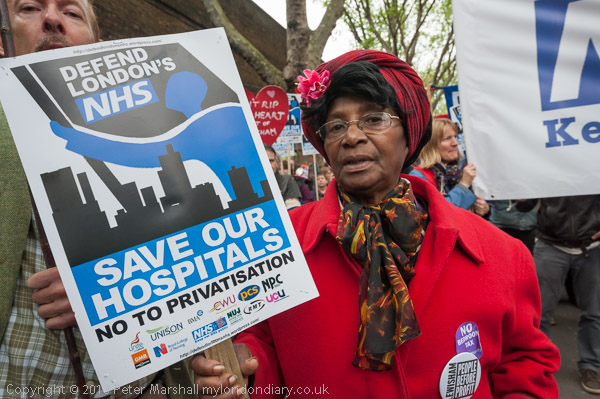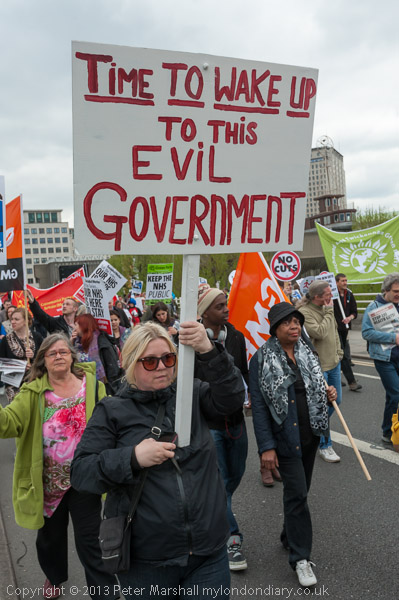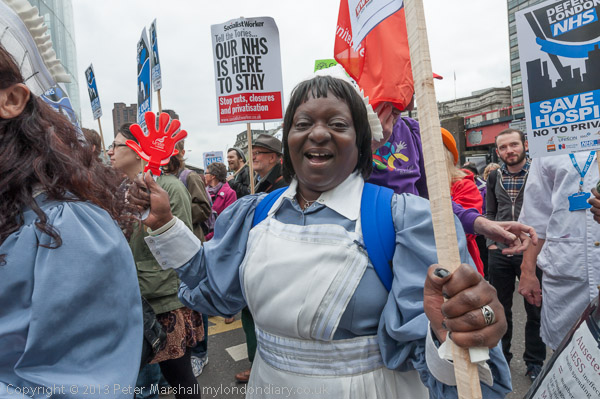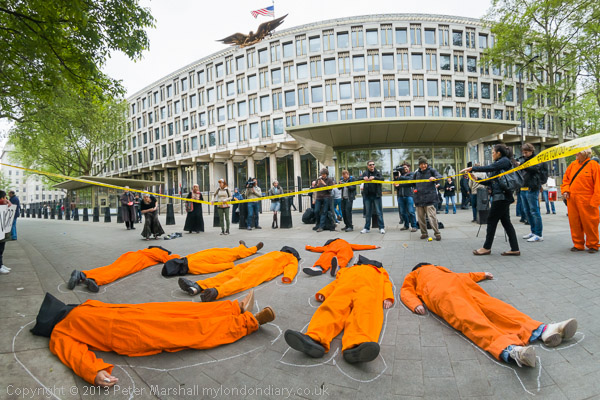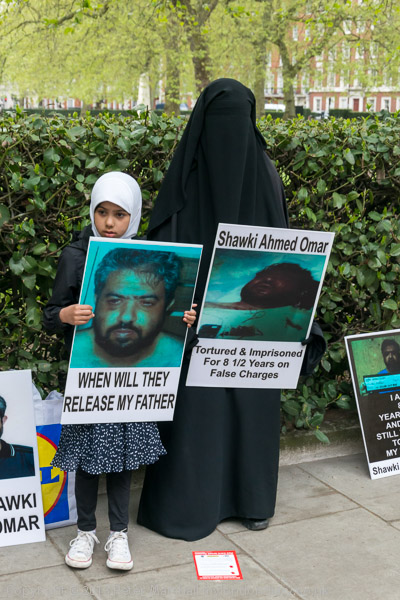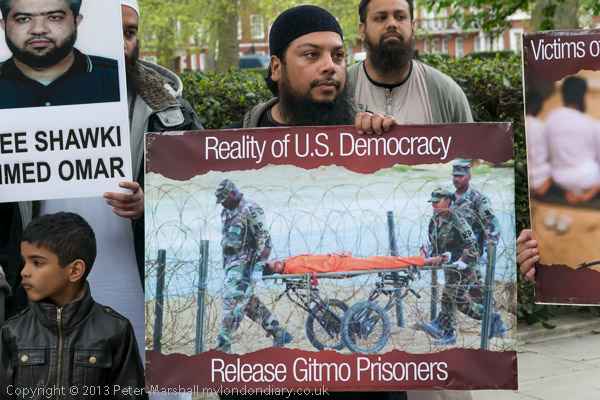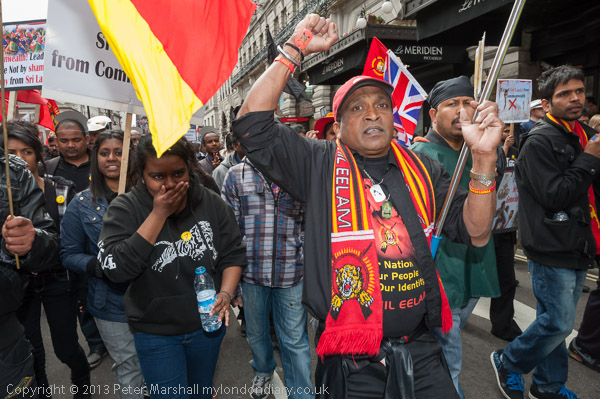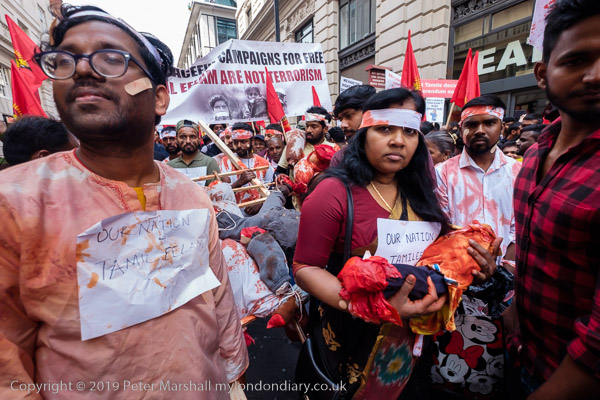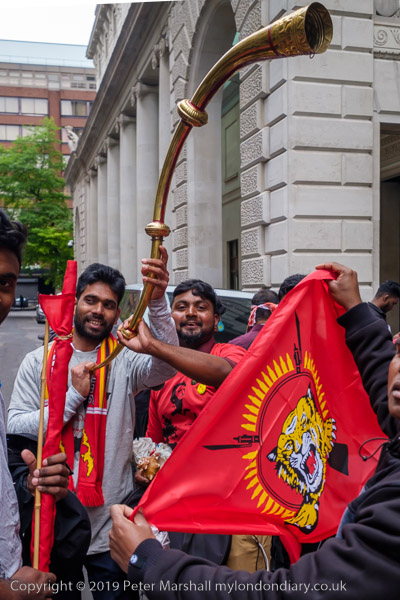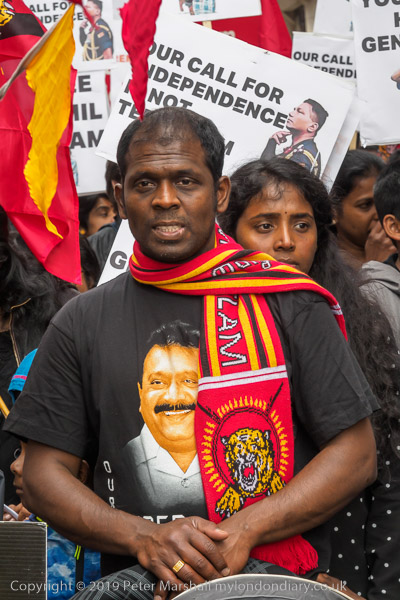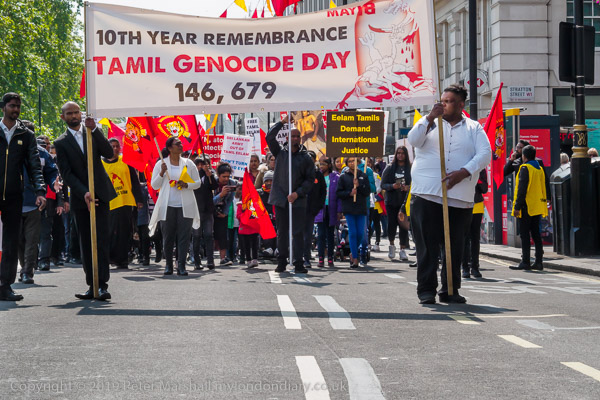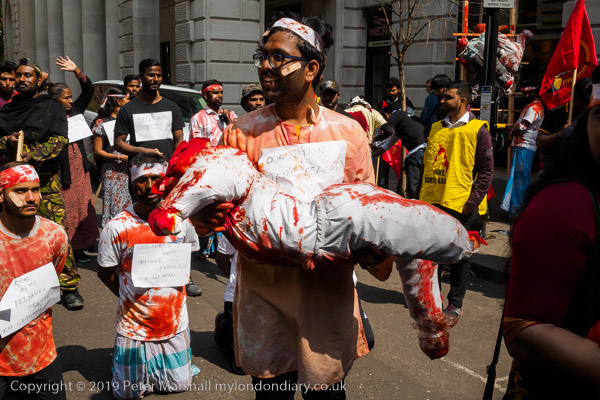Dangleway Revisited, Tamils Protest Killings: On Tuesday 23rd July 2013 I revisited the Museum of Docklands and then took the DLR to Royal Victoria for another ride on the Arab Emirates cableway in a detour on my way into central London to photograph a rally by Tamils at Downing Street.
Another Dangleway Ride – Royal Victoria Dock to North Greenwich
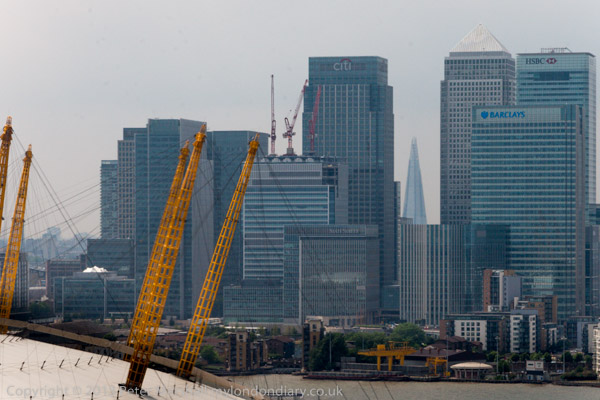
It was only a few weeks since my first ride on London’s cable car across the River Thames, but I was in docklands for a second visit to the ‘Estuary’ show at the Museum of Docklands. As one of those featured in the show I had been at the opening, but that was more about meeting people than seeing the work, though I had taken a short look at it all.
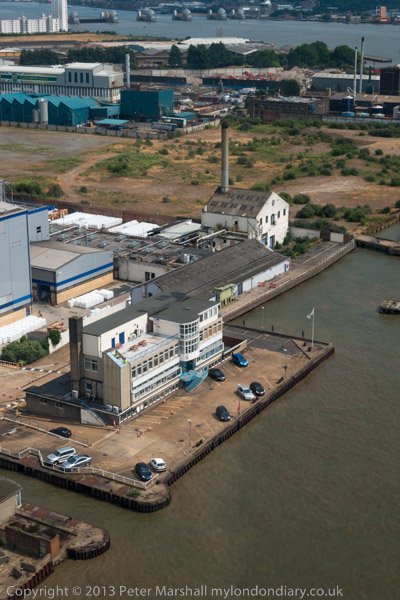
The dangleway is fairly pointless in terms of transport, but is one of London’s cheaper tourist attractions, and though short it joins two areas of some interest. I suppose the views might not be to everyone’s interest, though I found them fascinating, and its certainly the cheapest way to do a little aerial photography.
More pictures at Another Dangleway Ride.
Tamils Protest Sri Lankan Killings
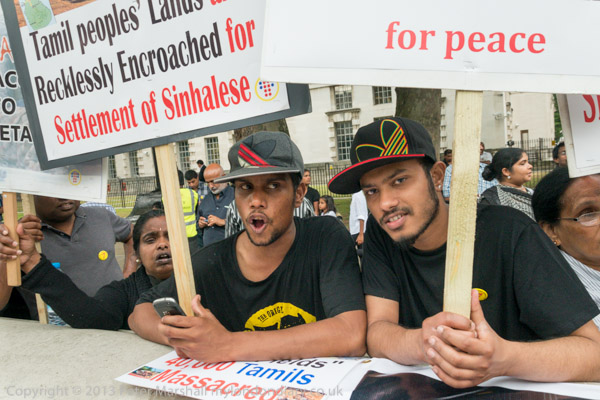
Tamils have long been the subject of discrimination in Sri Lanka, and the Civil War there from 1983 to 2009 against the Liberation Tigers of Tamil Eelam resulted in around 100,000 Tamil civilain deaths, as well as around 50,000 fighters on each side. The figures are unclear as the Sri Lankan government has always refused independent, international investigation to ascertain the full impact of the war.
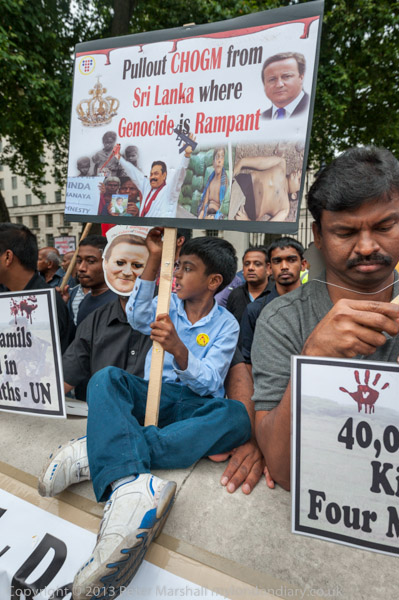
According to Wikipedia, “Since the end of the civil war, the Sri Lankan state has been subject to much global criticism for violating human rights as a result of committing war crimes through bombing civilian targets, usage of heavy weaponry, the abduction and massacres of Sri Lankan Tamils and sexual violence.”
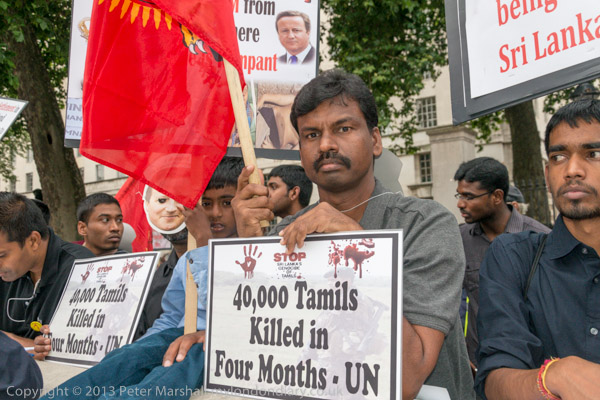
The Tamil Tigers also became notorious for attacks on civilians, suicide bombings. assassinations and the use of child soldiers. The final stages of the war in 2006-9 were particularly bloody, and ended in a total defeat of the LTTE.
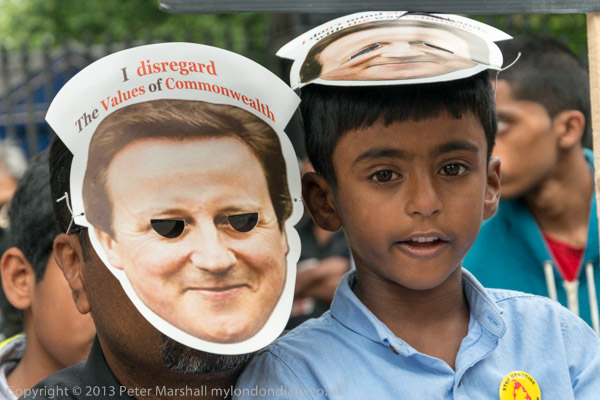
The British Tamil Forum at had come to Downing St on the 30th anniversary of the 1983 Black July when 3000 Tamils died in riots across Sri Lanka in an anti-Tamil pogrom orchestrated by the government.
This was not the first anti-Tamil pogrom, but its unprecedented frenzy of violence was a turning point after which Tamils knew they could never be safe in a state dominated by the Sinhalese.
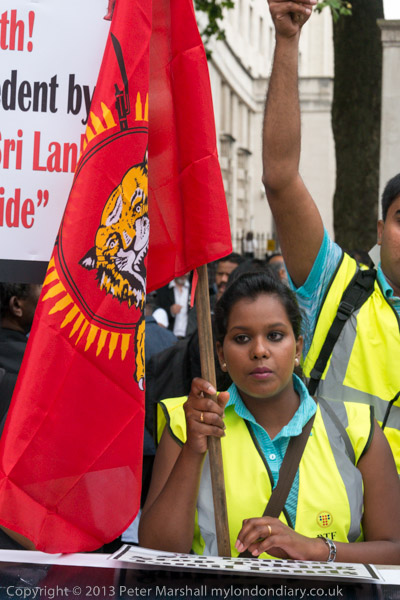
In the four years since the Mullivaikkal Massacre of 2009 Tamils claim that an estimated 147,000 Tamils are either dead or missing, and they see the only solution as the formation of an independent Tamil state – ‘Tamil Eelam.’
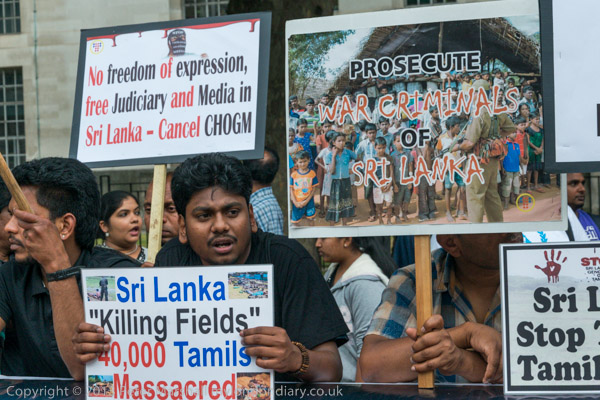
The protest called on the UK to boycott the Commonwealth Heads of Government Meeting (CHOGM 2013) in November 2013 hosted by Sri Lanka. They see this as legitimising a state which has been severley criticised by the UN and human rights organisation for the atrocities it has been committing.
People at the protest signed letters and cards calling on HRH The Prince of Wales to uphold the values of the Commonwealth and reconsider his decision to attend CHOGM 2013.
More pictures Tamils Protest Sri Lankan Killings.
Flickr – Facebook – My London Diary – Hull Photos – Lea Valley – Paris
London’s Industrial Heritage – London Photos
All photographs on this page are copyright © Peter Marshall.
Contact me to buy prints or licence to reproduce.
